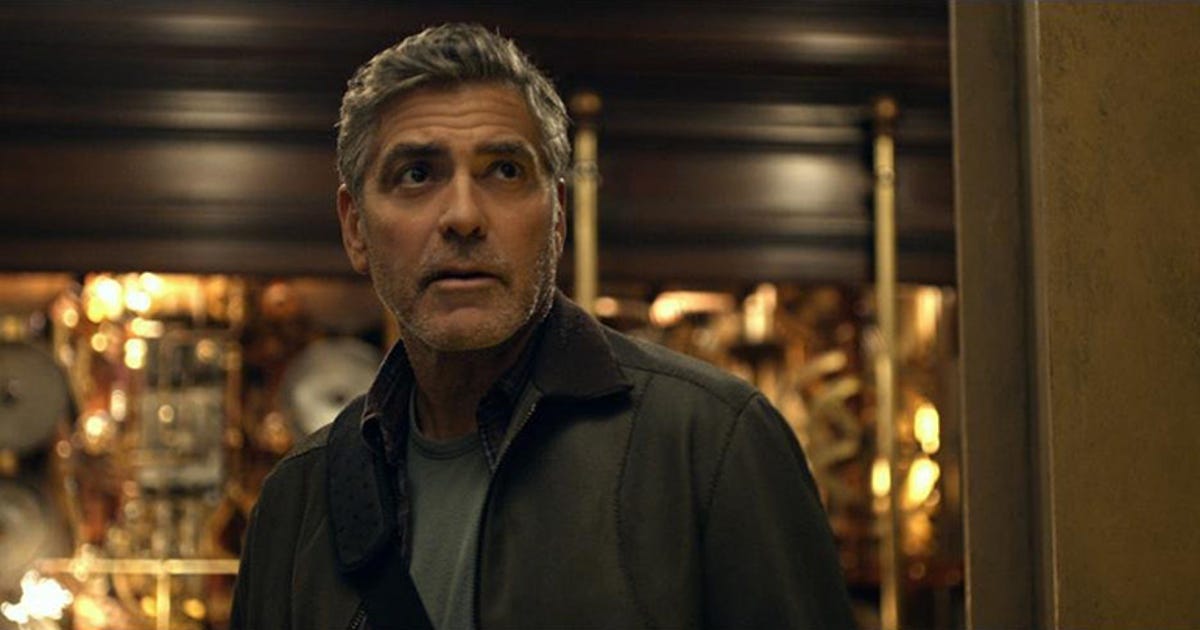
Disney
George Clooney’s grizzled face filled the screen, and I was in awe.
Not at the face per se, but at all the wrinkles. The individual creases and lines. Fine hairs and pores. Then there were the subtle variations in skin tones. Or how his white tunic was so bright (yeah, it was a different scene than the one above), yet the darkness of his hair was so deep.
It’s a face with which the world is familiar, but rendered with a level of fidelity I’d never seen.
I was sitting in Walt Disney Studio’s premiere cinema, the El Capitan Theater in Hollywood, about to experience the most impressive all-around movie presentation I’d ever witnessed.
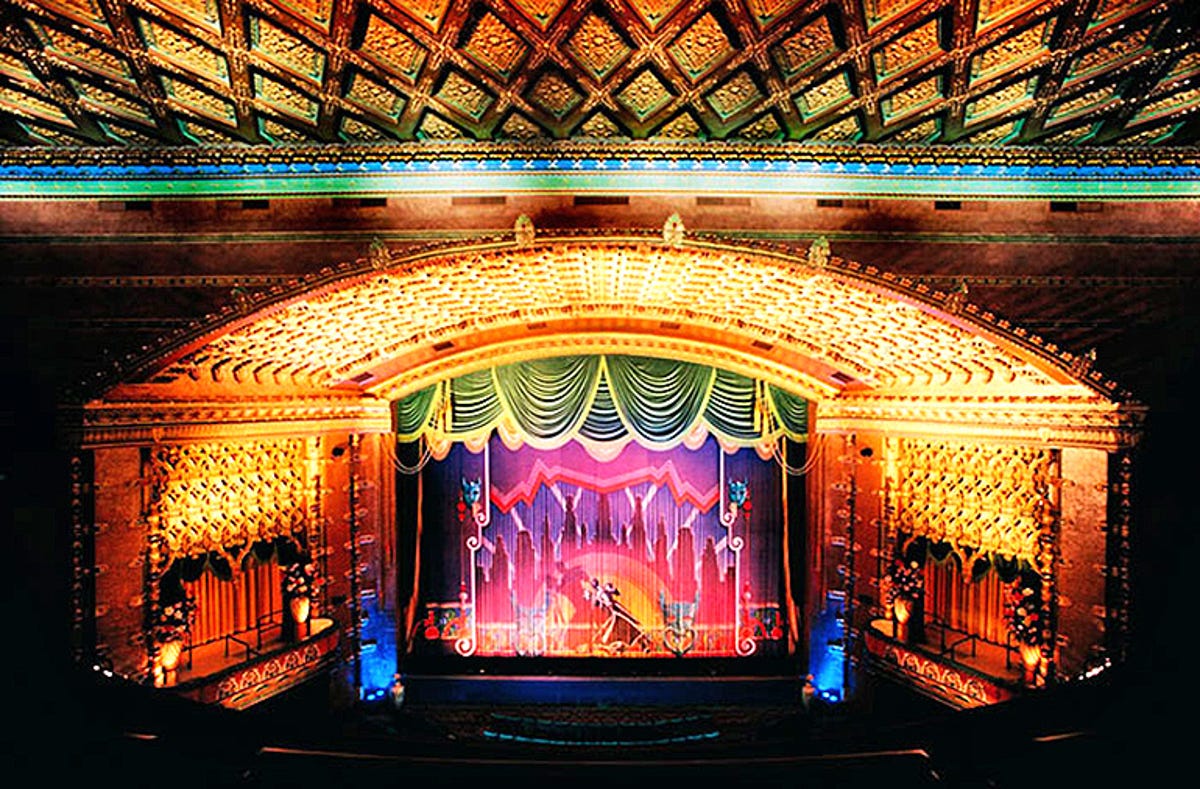

El Capitan Theater
The sights of tomorrow
“Tomorrowland” is the first movie released in Dolby Vision, which we’ve been talking about for ages. It promises to deliver improved contrast, brightness and color for both theatrical cinema and home video, and in early demos we’ve seen, it lives up to the hype.
Dolby Cinema is a new type of theater certification, sort of like “THX” or “IMAX.” It combines all of Dolby’s various cinema technologies, including Dolby Vision as well as Atmos sound, 3D, and more. “Tomorrowland” is the first movie to take advantage of it all. “Inside Out” is next.
In cinema form, there are a few things at work here. The first is that the image is unusually bright for big-screen cinema. Dolby is claiming 31 foot-Lamberts (fL), on the 45-foot-wide-by-25-foot-tall Harkness Matt Plus white screen used at the El Capitan. 31 fL is a lot for a screen that size, and more than double the brightness of a typical cinema. CNET calibrates TVs to 40 fL for its comparisons. In the darkened theater, the image popped like you’d expect a good TV to do.
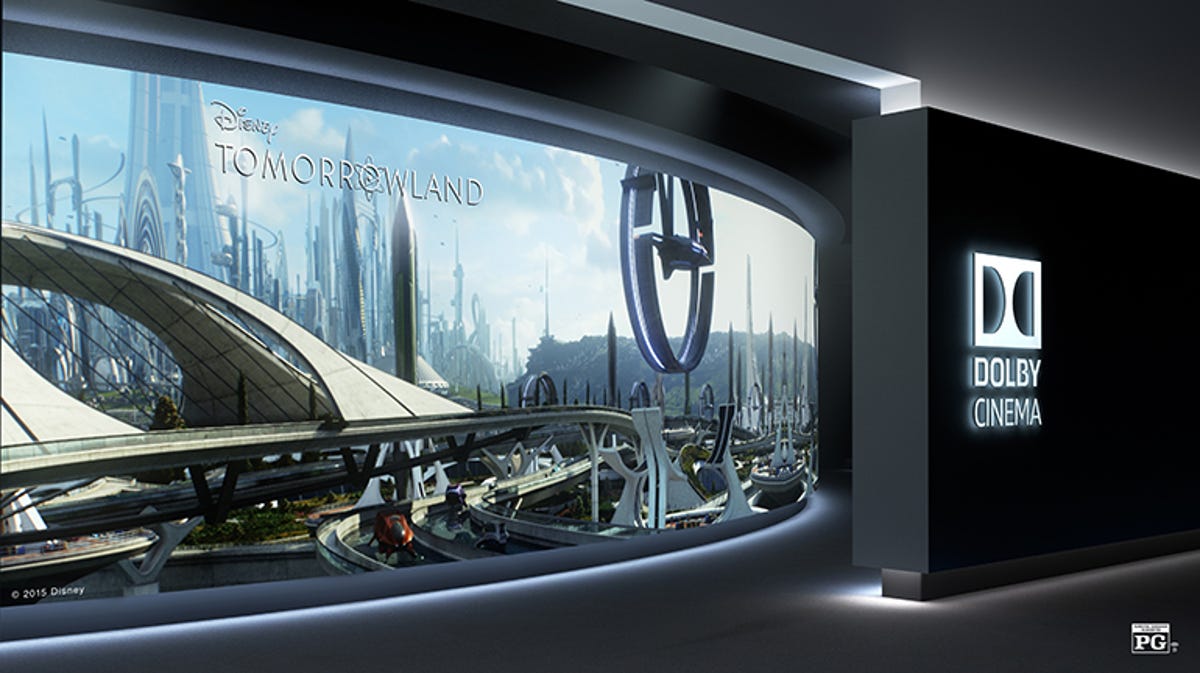

Disney
Another factor is the contrast, which is something digital projectors have struggled with since their inception. There was one moment, early on, where the screen went black, and I actually thought, “Wow, an actual black.”
I remember the early days of the digital cinema transition when “black” was the same mediocre gray we were getting in LCDs, DLP projectors and early plasma TVs at home. Dolby is claiming 1,000,000:1 contrast ratio. Unlike every other time a number like that is thrown around, this actually looked like it could be legit. Deep, beautiful images that almost seemed 3D. Thankfully, this presentation was in 2D, so I didn’t have to wear glasses and could enjoy its full brightness.
Then there was the color. “Tomorrowland” used the relatively wide P3 color space, a part of the Digital Cinema Initiatives (DCI) standard. A wider color space allows display of more colors, making the image appear closer to reality. P3 isn’t quite as broad as the Rec. 2020 color space (which Dolby Vision can handle too, apparently), but it’s a lot more than your TV can deliver.
Watching “Tomorrowland” there was an extra richness to the colors. Yellows and oranges especially caught my eye as being more vibrant than I’d expect to see on a regular TV or home projector.
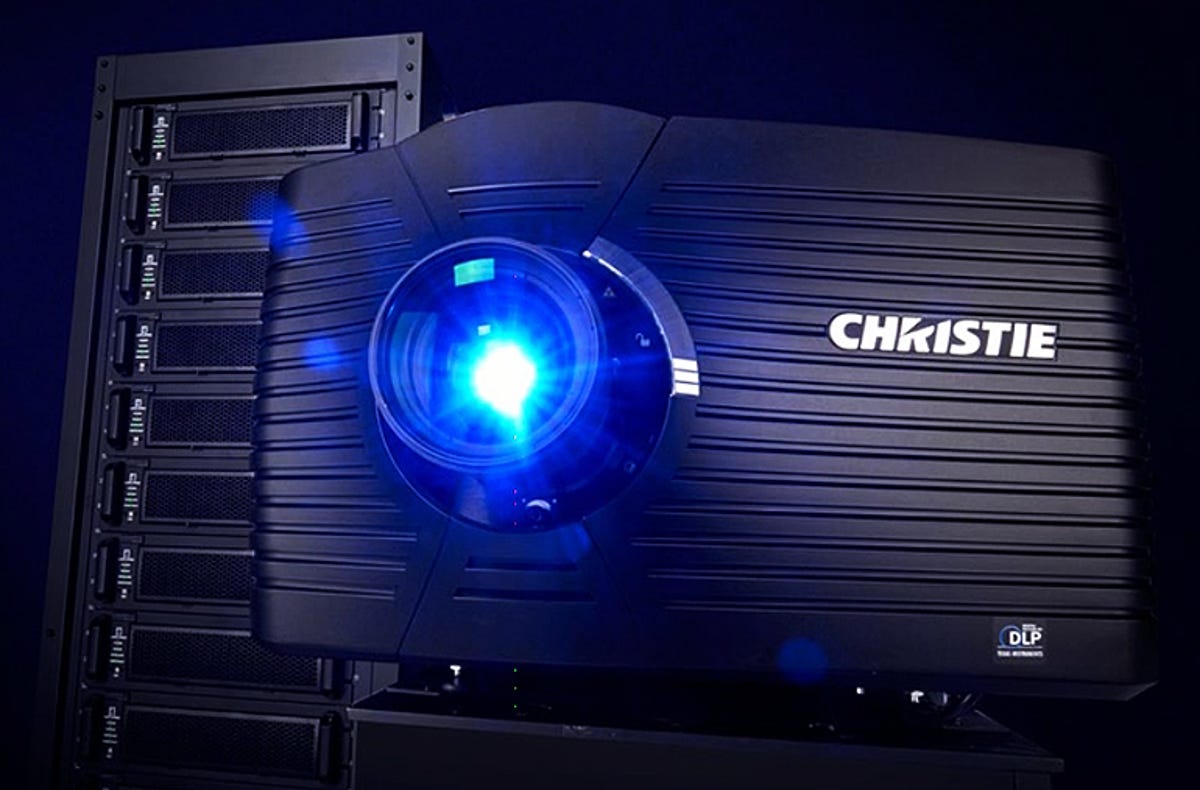

Christie
And of course, the resolution. I was sitting six rows back, but the El Capitan has a stage, so I was probably more like 12 to 15 rows from the screen in a normal theater. From this distance, on a screen that huge, the detail was incredible. Far sharper than I’d seen in most theaters, though that’s not saying much since the vast majority of digital cinema theaters are 2K, and finding a decent film projection these days is like trying to find a typewriter repairman.
Early digital cinema projectors were so low-resolution that from any seat you’d want to sit in, you’d be able to see the tell-tale grid of pixel structure, known as the “screen door effect” because it seemed like you were looking through a screen door. Here, sitting fairly close, the door was wide open, and all I saw was glorious, glorious detail. Like I’ve always said, in big screens, bring on the 4K.
The thanks for a lot of this goes to the projector, a Christie 4K unit with dual RGB laser projection heads. Yep, actual lasers. Red, green and blue lasers generated in their own towers (with serious cooling), and run to the projector using fiber optics. Not sure that could sound more futuristic.
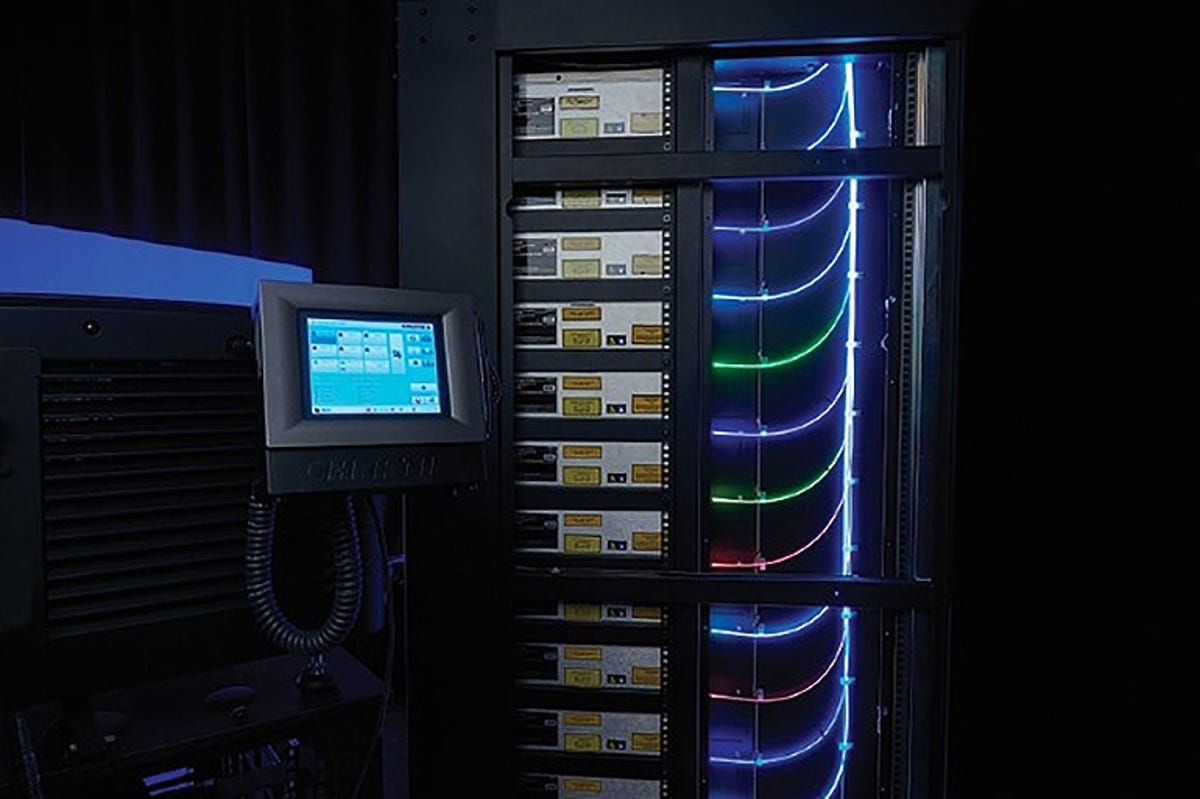

Christie
So when can I take it home?
While we’re not getting lasers in the home any time soon — unless you count expensive home-theater projectors like the Epson LS10000 CNET recently reviewed — we are getting TVs with HDR, expanded color and of course 4K.
You’ll need a pretty big TV to see all the detail with a 4K TV, but you’ll easily see the benefits of HDR and expanded color.
HDR TVs are coming out this year, and some, like Samsung’s JS9500 series , are on sale already. Only one announced so far, the Vizio Reference Series , uses Dolby Vision, but Dolby expects others in 2016 and later.
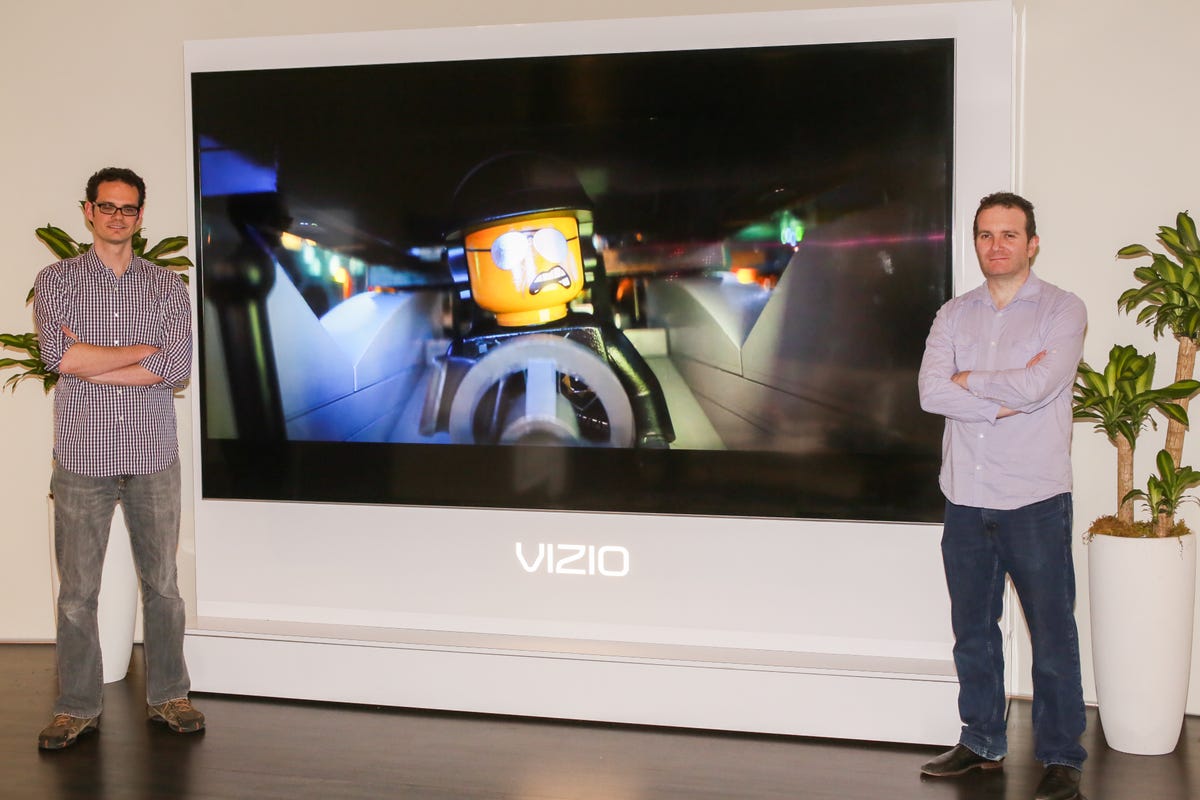

Sarah Tew/CNET
There are other potential HDR standards to compete against Dolby Vision, however, and forthcoming HDR-capable TVs might support more than one. We’ll be picking apart that potential mess when we get more info, probably closer to the launch of 4K Blu-Ray this holiday season. I, for one, am optimistic that it will work out in the consumer’s favor, if only because this time around, there won’t be a format war.
Check out HDR Arrives and HDR for photography vs. HDR for TVs: What’s the difference? for more info.
Expanded Color arrives this year as well. TVs are shipping this summer, and again, 4K BD should bring us the content, eventually.
Check out Ultra HD 4K TV color, part I: Red, green, blue and beyond and Ultra HD 4K TV color, part II: The (near) future for the full story.
Higher sounds
Of course, visuals are only part of a movie. The El Capitan, like a growing number of theaters, features Dolby Atmos. Atmos adds height speakers directly above the audience, but it also creates a new way to address those (and other) speakers. Called “object-based” surround, it allows sound designers to place “objects” (a gunshot, say) anywhere in the 3D space of the theater. The Atmos processing decides which speakers must be used to re-create that sound, in roughly that place, in any Atmos theater.
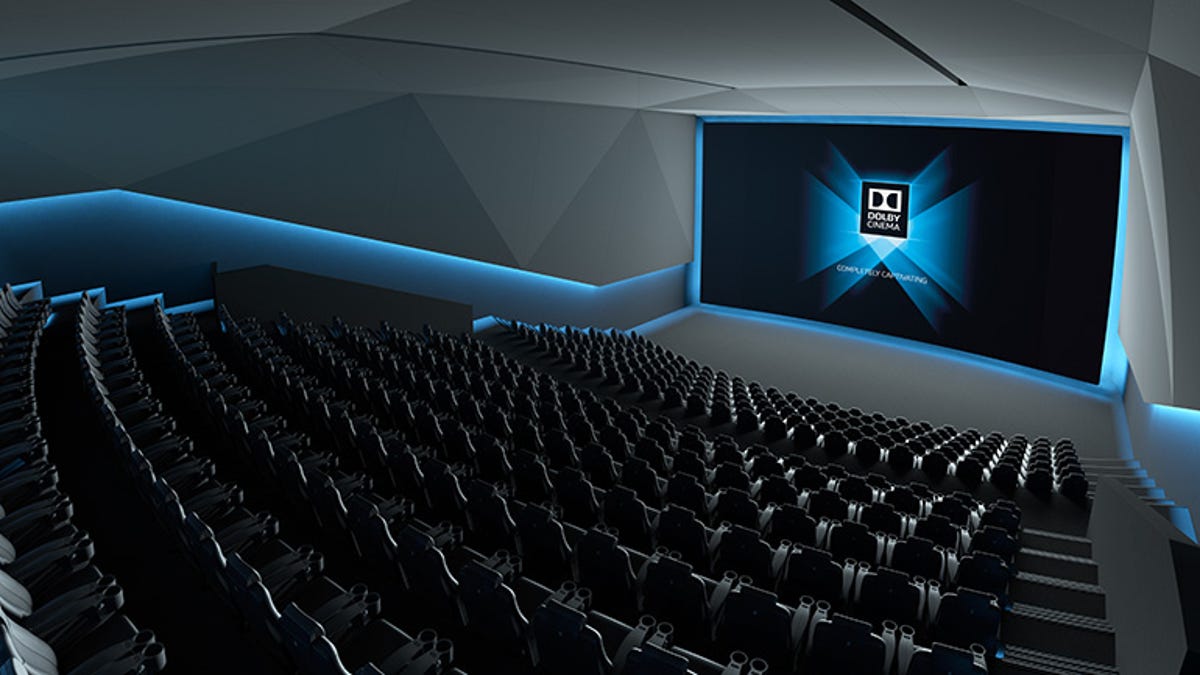

Dolby
Atmos allows more flexibility in audio mixing and surround sound design. I’ve seen several movies in Atmos now, and it works really well. You get far more of a natural enveloping of sound than the traditional surround-speaker-here-surround-speaker-there we’ve had for decades.
Atmos at home
Atmos-enabled receivers are here, as well as a few so-enabled speakers like the Pioneer Elite SP-EBS73 — and more are on the way. A smattering of Blu-ray discs offer Atmos soundtracks now, and more will arrive with 4K Blu-ray later this year.
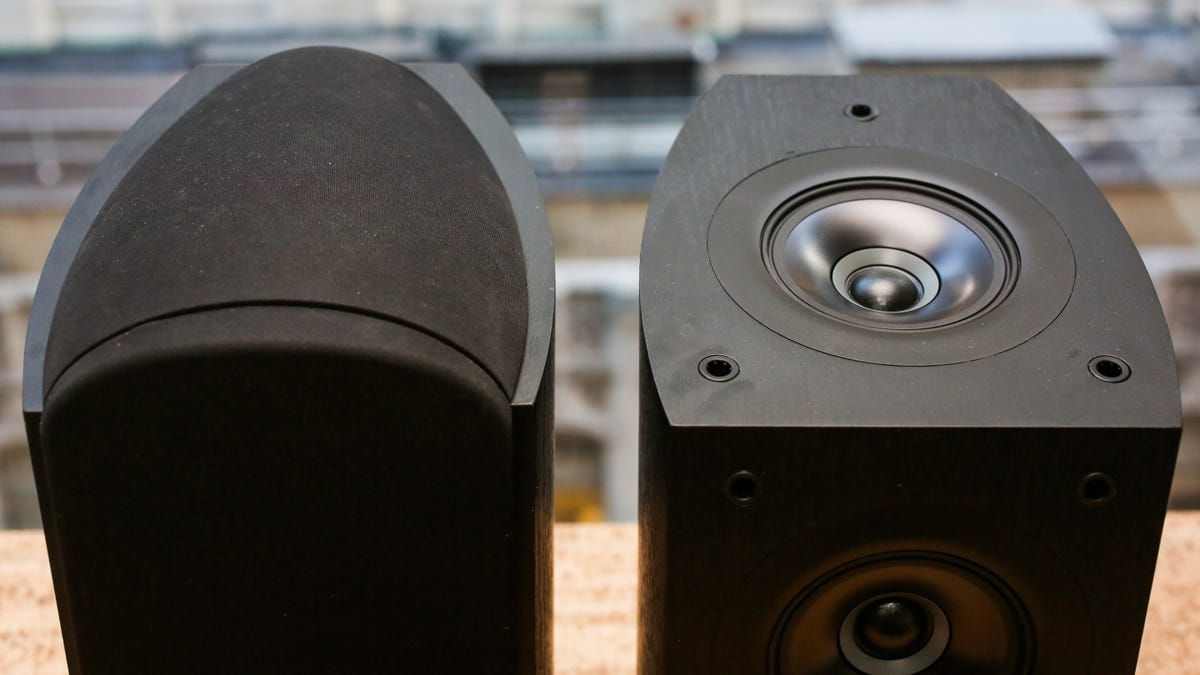

Sarah Tew/CNET
If you want the full Atmos experience in your home, by the way, you don’t need to mount speakers on your ceiling. Home speakers utilize upward-firing drivers (above). These bounce the sound off the ceiling, and do a decent job (from what I’ve heard so far) of approximating speakers actually mounted on the ceiling.
Do you have to upgrade to Atmos? No, but it does add another level of home-theater immersion. DTS has announced a similar surround method called DTS:X.
A reason to go to the theater tomorrow
I enjoyed “Tomorrowland.” Brad Bird knows how to craft an enjoyable movie. But I was more impressed with the visuals and audio than the movie itself, to be honest. Combined, they’re some of the first new cinema tech I’m actually excited about. It’s not a step back or a distraction like many recent theater “advancements,” such as 3D.
Will you be able to see Dolby Cinema in a theater near you? Maybe. Last month AMC announced that in addition to four initial installations, they’ll have 50 Dolby Cinema theaters by the end of 2018, including theaters in San Francisco, Las Vegas, Philadelphia, Miami, Boston, Denver, and Seattle, with 100 planned by the end of 2024. That’s not exactly a speedy roll-out, but that’s just one company. We’ll have to see how many others sign on.
In the mean time, if there is one near you, definitely check it out. Like, yesterday.
Got a question for Geoff? First, check out all the other articles he’s written on topics such as why all HDMI cables are the same, LED LCD vs. OLED vs. Plasma, why 4K TVs aren’t worth it and more. Still have a question? Send him an email! He won’t tell you what TV to buy, but he might use your letter in a future article. You can also send him a message on Twitter @TechWriterGeoff or Google+.




